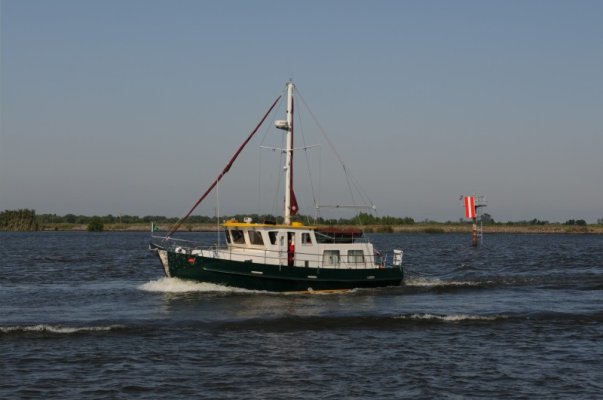The question focuses on high HP engines running at much lower RPMs than what they were designed for and producing low HP efficiently. The point of the thread was that the 6 cylinder wouldn't be as good as the 4 cylinder at 40 HP, as far as efficiency. There is a point below which an engine no longer produces prop HP efficiently.
I found that at 40 HP with my Cummins 6CTA 450 HP.
Ted
Just thinking out loud here....it seems there are quite a few reasons why this is true. I did read the thread and I didnt see several additional reasons why this seems generally true. Especially when compared to an engine like your Cummins.
1) The Cummins has several accessories sized to cover the 450hp. Fuel pumps, coolant pumps, seawater pumps, alternators, oil pumps, etc. All of these are going to be much larger and have far greater power requirements than smaller versions on smaller HP engines. Obviously these components are engineered and selected to cover the entire rpm range and HP output range for that engine and have a certain upper limit number in mind. The greater the delta between that upper limit design and actual HP produced will result in the greatest losses in efficiency when comparing to smaller components for the same target HP. Just as a mental exercise imagine putting all those components from your 450HP Cummins on to a the 40HP engine in the example...lol. Many times not all of these components are contained in BSFC charts and graphs.
2) Same idea for all frictional losses. Rings, bearings, valvetrain, seals, oil surface area, windage. This increase is mainly due to cubic inches and configuration such as cylinder count.
3) Fuel burn efficiency. When the large engine is run at part throttle at say 1000 rpm well outside of its peak BSFC and is loaded to 10% to achieve the 40 hp VS a small engine that is loaded to 75% at 1700 rpm and is closer to peak BSFC
IMO these are the fundamental and largest considerations when comparing very large engines such as your Cummins to much smaller engines when run at the example of 40 hp . IMO whether the engine is common rail or mechanical injection is secondary when the differential of the examples is so high. Obviously all parameters count.
But...the engines selected (and prop) must cover all areas of the mission. It does no good to compare an engine placed in a vessel with such a broad range of capability that it not only can idle away from the dock but put a 30k-50k lb vessel on plane for extended periods.
IMO its better to know your mission first. I guess selecting the smallest engine that satisfies the mission will be best for lowest fuel consumption. Add in modern tech like common rail, computer controls and turbos to get the same HP (and broader mission capability) from smaller displacement engines

